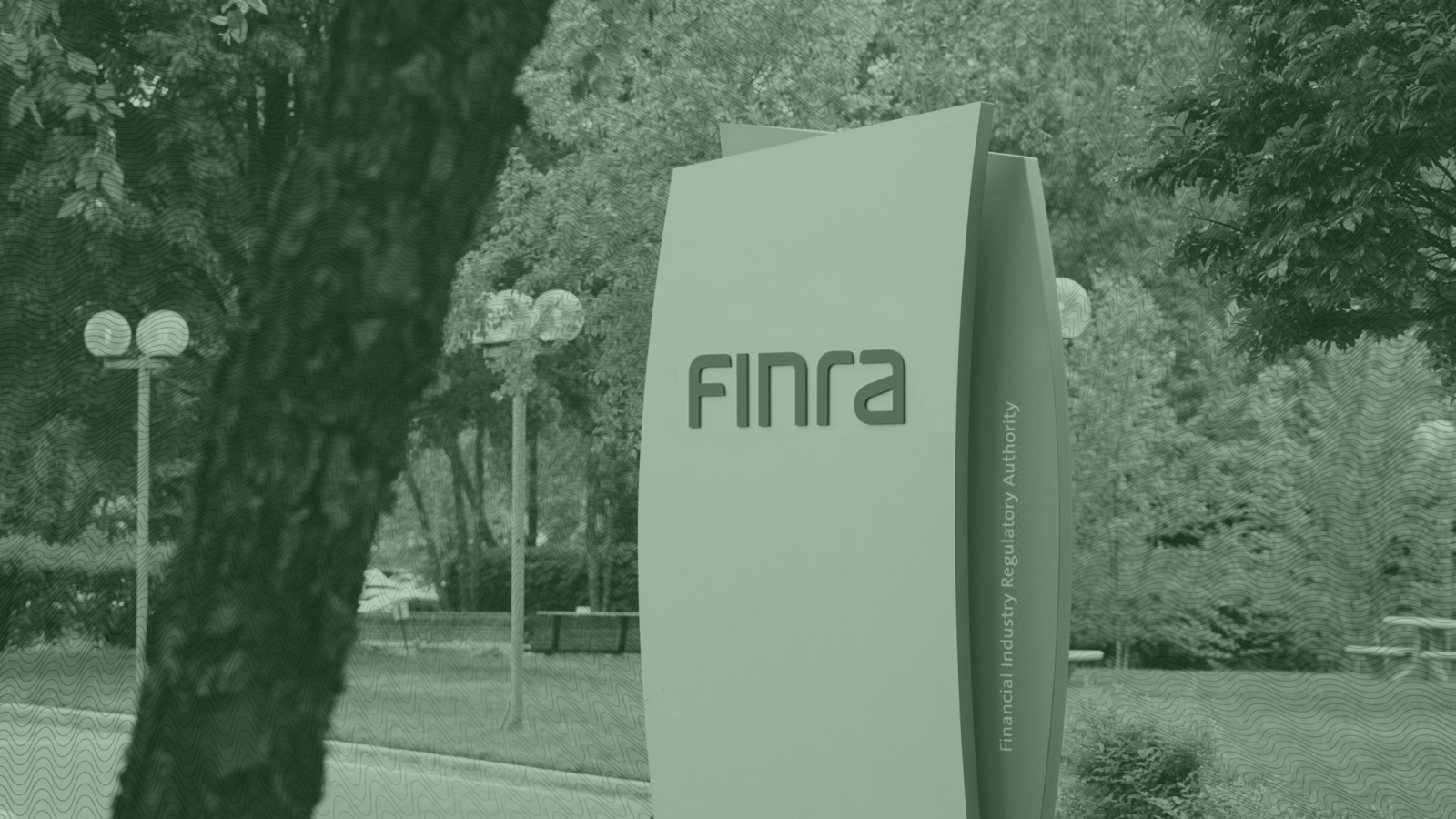Good morning.
Of course money doesn’t buy happiness — unless you’re stinking rich. New research from a senior fellow at the Wharton School found billionaires and millionaires reported much higher life-satisfaction levels than lower-income earners. The research incorporated decades-old data and looked to debunk the previous notion that happiness levels tail out after earning around $100,000 annually. It turns out the more people have, the happier they are all the way up the economic ladder.
Isn’t it great when academic research backs up what we already know?
Will a Trump Administration Really Axe Finra?

FINRA gets a bad rap for being a self-regulator that lets the “inmates run the asylum,” but this time the attacks are coming from a conservative think tank with serious sway over a potential GOP agenda next year.
Project 2025, a conservative manifesto created by the right-leaning lobby group The Heritage Foundation, unveiled plans to cut several government offices including FINRA. The document calls for the self-regulator to be folded into the existing framework of the Securities and Exchange Commission, saying the agency is “ineffective, costly, opaque, and largely impervious to reform.” Ouch.
Oh, That Amendment?
For all the benefits of oversight, it’s certainly hard to argue that “opaque” jab. A lawsuit filed in federal court last week is claiming FINRA’s in-house enforcement system is unconstitutional because it doesn’t let members have their day in court, a.k.a. the Seventh Amendment. An unrelated Supreme Court decision in June backed up the argument, forcing the SEC to hold legal proceedings in an actual court of law. Legal experts who spoke with The Daily Upside said the ruling could impact other regulators.
“FINRA’s hour has passed, and it’s time for Congress to end this failed experiment in Wall Street self-regulation,” said Bill Singer, a lawyer with more than 40 years’ experience in securities law.
The agency certainly has a reputation for being tight-lipped about internal proceedings (maybe even more so than the SEC). Barring a complete shutdown of the agency, the document suggested improvements to overall transparency and finances:
- Any penalties collected from members should go into a newly established investor reimbursement fund or to the Treasury. (That means FINRA can’t fund itself through fines.)
- FINRA must produce “meaningful” cost-benefit analysis with respect to major rules and annual budget reports.
- Proposed rule changes must be made available to the public and undergo a comment period.
“Ridiculous and Abysmal.” Still, former president Donald Trump has thrown cold water on the idea that the document could sway policy under his administration. According to reports, Trump said in a Truth Social post that he found certain proposals in the document “absolutely ridiculous and abysmal,” and added that he had no ties to its architects. He has, however, previously voiced admiration for The Heritage Foundation president Kevin Roberts, while many of the document’s co-authors and collaborators served in key roles in his first administration.
Build Credibility for the Next Generation of Wealth

The tactics advisors can use to build a healthy, growing book of business look a lot different in 2024 than they did in 1994.
The tectonic plates of household wealth are shifting as baby boomers are set to pass on a whopping $70 trillion in assets to their heirs.
Interested in winning business with this cohort?
Willow’s certificate programs — Advisor for Women™ and Advisor for NextGen™ can set you up on a path for success. These certificates give advisors an edge with the knowledge, resources, and credentials to serve the unique needs of the new face of wealth.
After completing your certificate, you’ll become part of Willow’s “find an advisor” matching platform, your shortcut to capitalize on the great wealth transfer.
Learn more about joining Willow’s Advisor Certificate Client Acquisition Platform.
Women Get First Crack at $84T Wealth Transfer
The much-talked-about great wealth transfer — expected to pass $84 trillion onto younger generations over the next two decades — might be going sideways.
Before money gets passed down to children and heirs, it will first be handed over to surviving spouses and partners. Because women typically outlive men, approximately $9 trillion is projected to fall into women’s hands in the coming years, according to the latest UBS Global Wealth Report, published this month. This so-called “horizontal transfer” means women will take center stage in important financial decisions that impact the future of wealth.
“With women becoming a significant portion of decision makers, both earning and inheriting assets, their views, preferences and decision-making power stand to disrupt the status quo for advisors,” Nia Impact Capital founder and CIO Kristin Hull told The Daily Upside.
Managing Women’s Wealth
Women are now increasingly breadwinners and key financial decision-makers, and make up a greater percentage of millionaires worldwide. But women and men often have different preferences for wealth building and face distinct challenges, according to experts. Major distinctions include women shouldering the majority of caregiving duties and navigating pay gaps between the genders, a recent Fidelity report found.
“Women clients are very much interested in what a company does, whether its products or services are beneficial to people and our planet,” Hull said. “In preparing for the wave of new clients, financial advisors will do well by also looking to highlight women asset managers.”
Longer Life, Bigger Bills. A longer lifespan also means stretching savings over a longer period. Women live six years longer than men on average, according to Fidelity. Women need to plan for health care at a time when it becomes increasingly important and costly.
“Up until very recently, the wealth management industry has largely catered toward men,” Hull said. “The financial industry stands to shift quite a bit with the current wealth transfer underway.”
How Interest Rates Cut Into Morgan Stanley’s Earnings

A rising tide doesn’t lift all boats, and Morgan Stanley’s wealth arm can attest to that. This week, the investment bank soundly beat expectations and reported a profit increase of more than 40% in the second quarter. (Round of applause.) However, Morgan Stanley’s performance was held down by its lagging wealth management division, thanks in part to a Federal Reserve that is stuck in neutral on rate cuts.
A Shot in the Arm
Morgan Stanley’s wealth arm, which oversees $5.7 trillion in assets, attracted only $36.4 billion this quarter, below analysts’ expectations and a far cry from the roughly $90 billion it reported for the same quarter last year. The division’s revenue rose just 2% to $6.79 billion year-over-year, and interest income was $1.79 billion, a 17% fall from last year’s second quarter.
Morgan Stanley claimed the Federal Reserve’s policy of higher-for-longer interest rates is causing the bank’s wealthier clients to shift cash into higher-yielding assets. That means lower deposits and dwindling profits. The bank is trying to remain positive, though, with executives telling analysts that despite net inflows slowing, the unit is growing within the bank’s expected range of 5% to 7% annually:
- The bank made waves in 2020 after purchasing trading platform ETrade (you remember, the one with the talking babies). But that momentum has significantly slowed: Federal interest rates have stood between 5.25% and 5.5% for almost a year now.
- Morgan Stanley’s not the only one feeling interest rate pains this week. Bank of America, the second-largest bank in the US, reported it earned a profit of $6.9 billion in the second quarter, beating analysts’ estimates. But as a result of interest expenses eating into its interest income, those profits fell below the $7.4 billion BofA raked in last year.
Here’s the Plan: In March, Morgan Stanley Wealth Management chief Jed Finn said the key to fully realizing the division’s potential requires funneling new clients to advise relationships and providing them with a wide variety of investment options. The bank has “over 200 products, 15% of which are unique at Morgan Stanley,” he told Barron’s. Finn said his hope is to get the arm’s AUM up to $10 trillion, a more than 40% increase from what it is now.
Extra Upside
- What’s Up, Chuck? Charles Schwab may be best known for its brokerage platform, but it’s the company’s bank that is giving investors headaches.
- Hands Up. A former broker and financial advisor was charged with robbing a bank in South Carolina using a fake bomb.
- Join the Advisor Network that has BlackRock’s Vote of Confidence. BlackRock has made a minority investment in Willow, backing their belief that a strong advisor-client relationship starts with a foundation of shared values and understanding. Follow BlackRock’s lead by joining Willow’s Advisor Platform. *
* Partner
Advisor Upside is edited by Sean Allocca. You can find him on LinkedIn.
Advisor Upside is a publication of The Daily Upside. For any questions or comments, feel free to contact us at advisor@thedailyupside.com.

